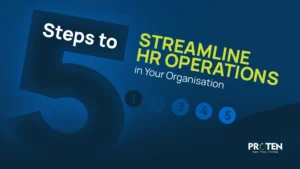Have you ever walked into a workplace and felt instantly energized by the professional yet stylish aura? Or, conversely, have you been left feeling underdressed or overwhelmed by the fashion choices around you? Your office dress code is more than just a set of rules; it’s a powerful tool that shapes company culture, boosts employee morale, and influences customer perception.
So let’s talk about clothes. Not just any clothes, but office clothes. The kind that can make or break a first impression, influence company culture, and even impact productivity. It might sound superficial, but hear us out. What you wear to work sends a message, loud and clear.
We’ve all been there – staring at our closet, wondering if those jeans are really business casual. Or maybe you’re an HR manager scratching your head, trying to figure out how to create a dress code that doesn’t spark a mutiny. Well, worry no more!
This guide is here to help you navigate the often-tricky waters of office attire. From casual Fridays to client meetings, we’ll break down everything you need to know to create a dress code that looks good, feels good, and boosts your bottom line. Ready? Then let’s dive in.
Why Your Dress Code Matters.
Beyond aesthetics, a dress code plays a crucial role in shaping your company’s identity. It sets the tone for how employees interact with each other and with clients. A strong dress code can boost employee morale, productivity, and customer confidence.
Consider it this way: Your employees are walking billboards for your company. Their appearance reflects directly on your brand. A professional and polished look can leave a lasting positive impression on clients and partners. Conversely, a lack of dress code guidelines can create a casual atmosphere that might not align with your company’s desired image.
Moreover, a clear dress code can foster a sense of unity among employees. It creates a level playing field, preventing potential conflicts or misunderstandings related to attire. A unified appearance can also enhance teamwork and collaboration.
The Dress Code Guide.
Crafting the perfect dress code requires careful consideration of your company culture, industry, and target audience. Let’s break down potential dress code guidelines for different work settings.
Mondays To Fridays: The Core Dress Code.
This is the foundation of your dress code. What you wear to the office on each day of the week. Consider factors such as your company’s industry, the level of client interaction, and the desired level of formality.
I. Business Formal: Suits, dress shirts, and ties for men; suits, dresses, or pantsuits for women.
II. Business Professional: Similar to business formal but with slightly more relaxed options like blazers, dress pants, and blouses.
III. Business Casual: Polo shirts, khakis, dress pants, skirts, and blouses.
IV. Casual (Usually Worn On Fridays): Jeans, sweaters, and collared shirts.
Remember, even in a casual setting, it’s essential to maintain a professional appearance. Avoid overly revealing clothing, distressed jeans, and casual footwear.
Outings: Dress To Impress.
Company outings, whether client dinners or team-building events, require a different approach. The dress code should reflect the occasion.
I. Formal Events: Business formal attire is appropriate.
II. Casual Outings: Business casual or smart casual is generally suitable.
Remote Work: A Different Perspective.
While remote work offers flexibility in attire, it’s essential to maintain a professional image, especially during video calls.
I. Dress for Success: Even when working from home, dressing professionally can boost productivity and focus.
II. Company Culture: Consider creating guidelines for video calls to ensure a consistent company image.
By following this guide, you and your employees can be sure to make an impression on your clients and other individuals that will last a lifetime.
Now that we’ve covered the dress code guide, let’s discuss the most important ingredient of all.
Confidence, The Chemical X.
Confidence isn’t just a feeling; it’s a superpower. When you walk into the office feeling sharp and put-together, you radiate an aura of competence and capability. It’s like a magic suit of armor that deflects self-doubt and fuels your productivity. Think about it this way: when you feel good about how you look, you’re more likely to take on challenges and contribute to meetings. You project a positive attitude that inspires your colleagues and strengthens your brand.
Here’s the secret sauce: dressing well doesn’t have to be expensive or complicated. It’s about finding clothes that flatter your body type and make you feel comfortable and confident. Invest in a few key pieces that you can mix and match to create versatile looks.
Final Thoughts…
Crafting the perfect office dress code is a delicate balance of art and science. It’s about more than just looking good; it’s about creating an environment where employees feel confident, respected, and aligned with the company’s values.
Remember, your dress code is a powerful tool that can shape your company culture, boost employee morale, and enhance your brand image. By understanding the nuances of different work settings and incorporating employee feedback, you can create a dress code that resonates with your team and elevates your company’s professional standing. Don’t be afraid to experiment and adapt your dress code as your company evolves.
Ultimately, the goal is to strike a balance between professionalism and individuality. A dress code that empowers employees to express their personal style while maintaining a cohesive company image is the holy grail. So, go forth and create a dress code that not only meets expectations but exceeds them. Your employees, your clients, and your company will thank you.
Remember, style is a form of communication. Dress to impress, but more importantly, dress to express the essence of your company’s brand.










